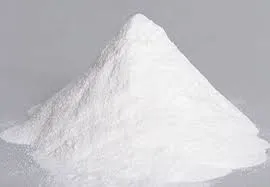
Nov . 06, 2024 04:11 Back to list
Uses and Benefits of Hydroxyalkyl Cellulose in Various Industries and Applications
Understanding Hydroxyalkyl Cellulose Properties, Applications, and Benefits
Hydroxyalkyl cellulose (HAC) is a crucial class of non-ionic cellulose derivatives known for their versatile properties and numerous applications across various industries. As a polymer derived from cellulose, HAC retains many inherent advantages of cellulose, including biocompatibility, biodegradability, and non-toxicity. This article will delve into the properties, utilizations, and benefits of hydroxyalkyl cellulose, highlighting its significance in modern applications.
Chemical Properties and Composition
Hydroxyalkyl cellulose is synthesized by the alkylation of cellulose, where hydroxyl groups on the cellulose backbone are replaced with hydroxyalkyl groups, typically involving ethylene oxide or propylene oxide. This modification not only enhances the solubility of cellulose in water but also alters its rheological properties, enabling its application in various formulations.
The degree of substitution (DS) and molecular weight are critical factors influencing the properties of HAC. A higher DS generally leads to improved solubility in water, while the molecular weight affects the viscosity of the resulting solution. As such, different grades of hydroxyalkyl cellulose are available, tailored to meet specific requirements across multiple applications.
Applications in Industries
1. Pharmaceutical Industry Hydroxyalkyl cellulose is widely used in pharmaceutical formulations, particularly as a thickening agent, binder, and film former. Its ability to modify viscosity makes it a suitable excipient in tablet formulations, ointments, and gels. Furthermore, HAC imparts a controlled release of active ingredients, enhancing the effectiveness of the drug delivery system. Additionally, its biocompatibility makes it an ideal choice for use in formulations intended for prolonged contact with body tissues.
2. Cosmetic and Personal Care Products In the cosmetic industry, hydroxyalkyl cellulose serves as a natural thickener and stabilizer in creams, lotions, and shampoos. Its film-forming properties provide a smooth texture to products, enhancing their sensory appeal. HAC is also known for its moisturizing properties, making it a popular ingredient in skin care formulations aimed at providing hydration and softness to the skin.
hydroxyalkyl cellulose

3. Food Industry Hydroxyalkyl cellulose is employed in the food industry as a food additive. Its functional properties, such as emulsification, stabilizing, and texturizing, make it a valuable ingredient in sauces, dressings, and bakery products. Furthermore, it is used as a fat replacer, reducing the caloric content while maintaining desirable textural qualities in food products.
4. Construction and Building Materials HAC plays a significant role in the construction industry, particularly in producing adhesives, paints, and coatings. It acts as a thickener and improves the workability and consistency of cement mixtures. The use of hydroxyalkyl cellulose in these materials also enhances their adhesion properties and water retention, contributing to the durability of construction products.
Environmental Benefits
One of the most compelling advantages of hydroxyalkyl cellulose is its environmental impact. As a derivative of natural cellulose, HAC is biodegradable and can be sourced from renewable resources. Its non-toxic nature makes it an excellent alternative to synthetic polymers, which often contribute to environmental pollution. With the rising concern over sustainability, hydroxyalkyl cellulose aligns with the push towards eco-friendly materials in various sectors.
Concluding Thoughts
Hydroxyalkyl cellulose represents a remarkable innovation in the realm of cellulose derivatives, showcasing a perfect blend of performance and functionality. Its diverse applications across pharmaceutical, cosmetic, food, and construction industries underscore its adaptability and significance. As industries continue to seek sustainable alternatives without compromising on quality, hydroxyalkyl cellulose stands out as a key player in the development of innovative and environmentally friendly products.
In summary, understanding hydroxyalkyl cellulose extends beyond its basic properties; it encompasses a broader context of sustainable development and industrial versatility. As research and development in cellulose derivatives advance, it is anticipated that hydroxyalkyl cellulose will find even more applications, continually reshaping the landscape of various industries for the better.
-
Unlocking the Benefits of HPMC Products: A Gateway to Versatile Applications
NewsAug.07,2025
-
Unleashing the Potential of HPMC Ashland: A Comprehensive Look
NewsAug.07,2025
-
Tile Bonding Cellulose: The Key to Superior Adhesion and Durability
NewsAug.07,2025
-
Hydroxypropyl Methylcellulose Powder: The Versatile Component in Modern Pharmaceuticals
NewsAug.07,2025
-
Hydroxyethyl Cellulose: The Versatile Solution for Various Industries
NewsAug.07,2025
-
Hydroxyethyl Cellulose (HEC): The Versatile Polymer for Various Applications
NewsAug.07,2025







